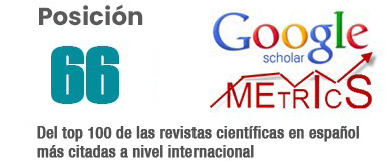Analysis of neural networks and time series in financial assets
DOI:
https://doi.org/10.62452/pwmh2a61Keywords:
Artificial intelligence, supervised learning, neural networks, deep learningAbstract
An artificial neural network is a mathematical model that uses a system of internal and external layers connected through structures called neurons, which together simulate the architecture of the connections between neurons in the human brain. However, these neural networks have gone through the process of learning on a set of known data, they become algorithms capable of predicting, within a previously established range, the behavior of a set of the same type of data for which they are only known. the previous stages and not the results of the behavior. This work aims to obtain stock price predictions considering different types of models through the use of specialized computational tools. It was evident that the comparison of different deep learning architectures using the Naive method revealed that the results obtained by the latter were better than the results obtained by neural network architectures, as well as the FeedForward function turned out to be the best of the neural models analyzed.
Downloads
References
Arrieta Bechara, J. E., Torres Cruz, J. C., & Velásquez Ceballos, H. (2009). Predicciones de modelos econométricos y redes neuronales: el caso de la acción de SURAMINV. Semestre Económico, 12(25), 95-109.
Bosse, N. (2020). An Introduction to Deep Learning and the Concept of Regularization. Reading Processing Applying, 23.
Castel, A. G., & Górriz, C. G. (2004). Importancia de los recursos humanos en la productividad de las tecnologías de la información. En, J. A. Fraiz Brea y M. Vila Alonso, La empresa y su entorno: best papers proceedings 2004. (pp. 969-977). Universidade de Vigo.
Cockburn, I. M., Henderson, R., & Stern, S. (2018). The impact of artificial intelligence on innovation: An exploratory analysis. En, A. Agrawal, J. Gans Y A. Goldfarb, The economics of artificial intelligence: An agenda. (pp. 115-146). University of Chicago Press.
Escobar, V. (2002). Análisis de datos con redes neuronales aplicadas al diagnós-tico de la solvencia empresarial. Cuestiones Económicas (3), 79-132.
Goodfellow, I., Bengio, Y., & Courville, A. (2016). Deep learning. MIT press.
Gorriz, C. G., & Castel, A. G. (2004). Impacto de las Tecnologías de la Información en la Productividad de las Empresas Españolas. Facultad de Ciencias Económicas y Empresariales.
Griffin, J., Nardari, F., & Stulz, R. M. (2004). Stock market trading and market conditions. (Working Paper No. 10719). National Bureau of Economic Research. http://www.nber.org/papers/w10719 doi: 10.3386/w10719
Henrique, B. M., Sobreiro, V. A., & Kimura, H. (2018). Stock price prediction using support vector regression on daily and up to the minute prices. The Journal of finance and data science, 4(3), 183-201.
Johnson, C. A., & Padilla, M. A. (2005). Regularidades no lineales en índices accionarios. Una aproximación con redes neuronales. El trimestre económico, 72(288), 765-821.
Kommula, VP, Reddy, KO, Shukla, M., Marwala, T. y Rajulu, AV (2013). Caracterización fisicoquímica, de tracción y térmica de hebras de fibras de pasto Napier (nativo africano). Revista Internacional de Análisis y Caracterización de Polímeros, 18 (4), 303-314.
LeCun, Y., Bengio, Y., & Hinton, G. (2015). Deep learning. nature, 521(7553), 436-444.
Ledezma-Yanez, I., Wallace, W. D. Z., Sebastián-Pascual, P., Climent, V., Feliu, J. M., & Koper, M. (2017). Interfacial water reorganization as a pH-dependent descriptor of the hydrogen evolution rate on platinum electrodes. Nature Energy, 2(4), 1-7.
Michalski, R. S., Carbonell, J. G., & Mitchell, T. M. (Eds.). (2013). Machine learning: An artificial intelligence approach. Springer Science & Business Media.
Mota-Hernández, C. I., Alvarado-Corona, R., & Jiménez García, B. M. (2019). RNA's en el Análisis a Subyacentes de Divisas y Deuda Cotizadas en el MexDer. Acta Nova, 9(2), 190-203.
Navia-Rodríguez, J. R., Cobos-Lozada, C. A., & Mendoza-Becerra, M. E. (2020). Trading Algorítmico para la Predicción de Series de Tiempo Financieras: Una Revisión Sistemática. Revista Ibérica de Sistemas e Tecnologias de Informação, (E38), 337-357.
Ortiz Arango, F. (2017). Pronóstico de precios de petróleo: una comparación entre modelos GARCH y redes neuronales diferenciales. Investigación económica, 76(300), 105-126.
Stankevičienė, J., & Akelaitis, S. (2014). Impact of public announcements on stock prices: Relation between values of stock prices and the price changes in Lithuanian stock market. Procedia-Social and Behavioral Sciences, 156, 538-542.
Vasquez, M. (2018). Predicción de series de tiempo usando un modelo híbrido basado en la descomposición wavelet. Comunicaciones en Estadística, 11(2), 257-283.
Vidal-Castillo, A. A., Venegas-Martínez, F., & Ortiz-Arango, F. (2021). Análisis comparativo de pronósticos del IPC obtenidos mediante modelos GARCH y redes neuronales. Revista de investigación en ciencias contables y administrativas, 7(1), 134-166.
Downloads
Published
Issue
Section
License
Copyright (c) 2024 Ximena Minshely Guillín-Llanos, Adolfo Elizondo-Saltos, Miriam Patricia Cárdenas-Zea, Kevyn Adrián Alcívar-Méndez (Autor/a)

This work is licensed under a Creative Commons Attribution-NonCommercial-ShareAlike 4.0 International License.
Authors who publish in Revista Metropolitana de Ciencias Aplicadas (REMCA), agree to the following terms:
1. Copyright
Authors retain unrestricted copyright to their work. Authors grant the journal the right of first publication. To this end, they assign the journal non-exclusive exploitation rights (reproduction, distribution, public communication, and transformation). Authors may enter into additional agreements for the non-exclusive distribution of the version of the work published in the journal, provided that acknowledgment of its initial publication in this journal is given.
© The authors.
2. License
The articles are published in the journal under the Creative Commons Attribution-NonCommercial-ShareAlike 4.0 International License (CC BY-NC-SA 4.0). The terms can be found at: https://creativecommons.org/licenses/by-nc-sa/4.0/deed.en
This license allows:
- Sharing: Copying and redistributing the material in any medium or format.
- Adapting: Remixing, transforming, and building upon the material.
Under the following terms:
- Attribution: You must give appropriate credit, provide a link to the license, and indicate if any changes were made. You may do this in any reasonable manner, but not in any way that suggests the licensor endorses or sponsors your use.
- NonCommercial: You may not use the material for commercial purposes.
- ShareAlike: If you remix, transform, or build upon the material, you must distribute your creation under the same license as the original work.
There are no additional restrictions. You may not apply legal terms or technological measures that legally restrict others from doing anything the license permits.




